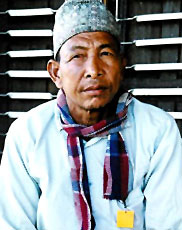 History of Gonda District suggests that this territory formed part of the ancient kingdom of Kosala. As per historical accounts, initially the district was part of Awadh province in reign of Mughals. Gonda District was controlled by the ruler of Awadh till its annexation in February 1856. Awadh was annexed by the British government and Gonda was separated from Bahraich. During the British rule a commissionery was constituted for the administration of this region. Gonda was its headquarters. At the time of independence there were three Tehsils namely Gonda Sadar, Tarabganj and Uttraulla in the district.
History of Gonda District suggests that this territory formed part of the ancient kingdom of Kosala. As per historical accounts, initially the district was part of Awadh province in reign of Mughals. Gonda District was controlled by the ruler of Awadh till its annexation in February 1856. Awadh was annexed by the British government and Gonda was separated from Bahraich. During the British rule a commissionery was constituted for the administration of this region. Gonda was its headquarters. At the time of independence there were three Tehsils namely Gonda Sadar, Tarabganj and Uttraulla in the district.
Further, the history of Gonda District states that on 1st of July 1953, Tehsil Uttraulla was bifurcated in two Tehsils namely Balrampur and Uttraulla. Three new Tehsils were constituted in the year 1987 as Tulsipur, Mankapur and Colonelganj. Later on in the year 1997, Gonda District was bifurcated in two parts and Balrampur District was created including three Tehsils of north part. On the border district of Gonda and Shravasti lies a vast area of ruins known at the present day as Sahet Mahet represents the ancient site of Shravasti which covered the region comprising of both the districts. The ancient history of both these districts therefore, is the history of Shravasti and region around it. It was the capital of Uttar Kosala.
Medieval history of Gonda District states that the first Muslim invasion of the region north of Ghaghara River took place in second quarter of 11th century under Syed Salar Masood. The rulers of Gonda and adjoining parts were much perturbed to find a foreigner in their country but soon they formed a league, and decided to offer united resistance to Masood. From this time onwards Gonda and Bahraich seem to have always been held singly owing to its isolated position due to river Ghaghara.
According to the history of Gonda District, the region is historically and geographically linked with Bahraich from times immemorial. In the second half of the 13th century Gonda was included in the government of Bahraich by the early Muslim rulers and hence it has no independent history of its own. Further, there is no specific reference about the district till the reign of the Tughlaqs probably on account of its inclusion in the government of Bahraich. District of Gonda provided a free passage to Sultans of Delhi who usually marched through these districts on way to the eastern parts of their empire. Gonda District did not find mention in historical records till the reign of Ghiyas-ud-din Tughlaq.
In 1394, the district came under the sway of Khwaja Jahan Malik Sarwar, the founder of the Sharqi dynasty of Jaunpur. From earliest days of Muslim domination till the advent of Akbar, the history of Gonda district is primarily the history of local clans. During the early phase of his period the whole of Gonda was ruled by aboriginal Dom, Tharu Tribe, Bhar, Pasi and the like. The district formed an integral part of the empire of Akbar (1556-1605). With the annexation of the province of Awadh by the East India Company in February 1856, Gonda became a separate district in the Gonda-Bahraich Commissionership. Annexation passed off quietly, although the Gonda raja exhibited strong disapproval of the measure and was with difficulty persuaded to leave his fort at Gonda and meet the district officer.
In the Non Cooperation Movement launched by Mahatma Gandhi people from this district actively participated. The stage for national activities was already set in the district. The rural and urban populace of the district shared its due in the various activities of the Non-cooperation movement. After the non-cooperation movement the district of Gonda remained sensitive throughout in catching vibrations of political activities pervading throughout the country. On October 9, 1929, Mahatma Gandhi visited the district along with Jawaharlal Nehru. The non-cooperation movement which was abruptly suspended by Gandhiji in 1922 was revived in the Congress session of 1929. Thus, it is proved by the history that Gonda District had played a great role in the country`s freedom struggle.



















